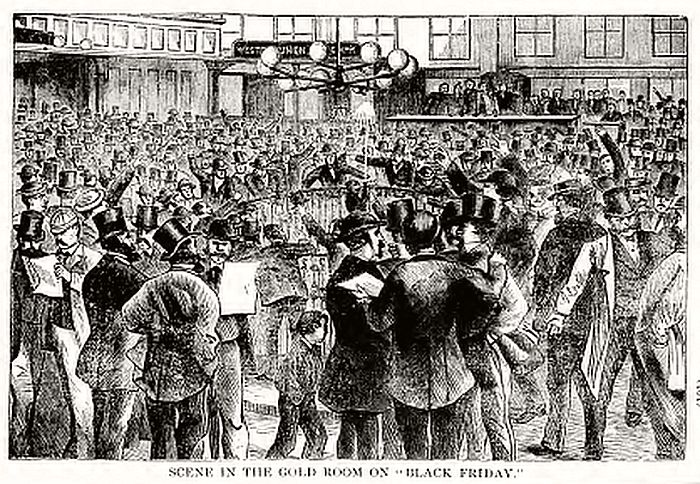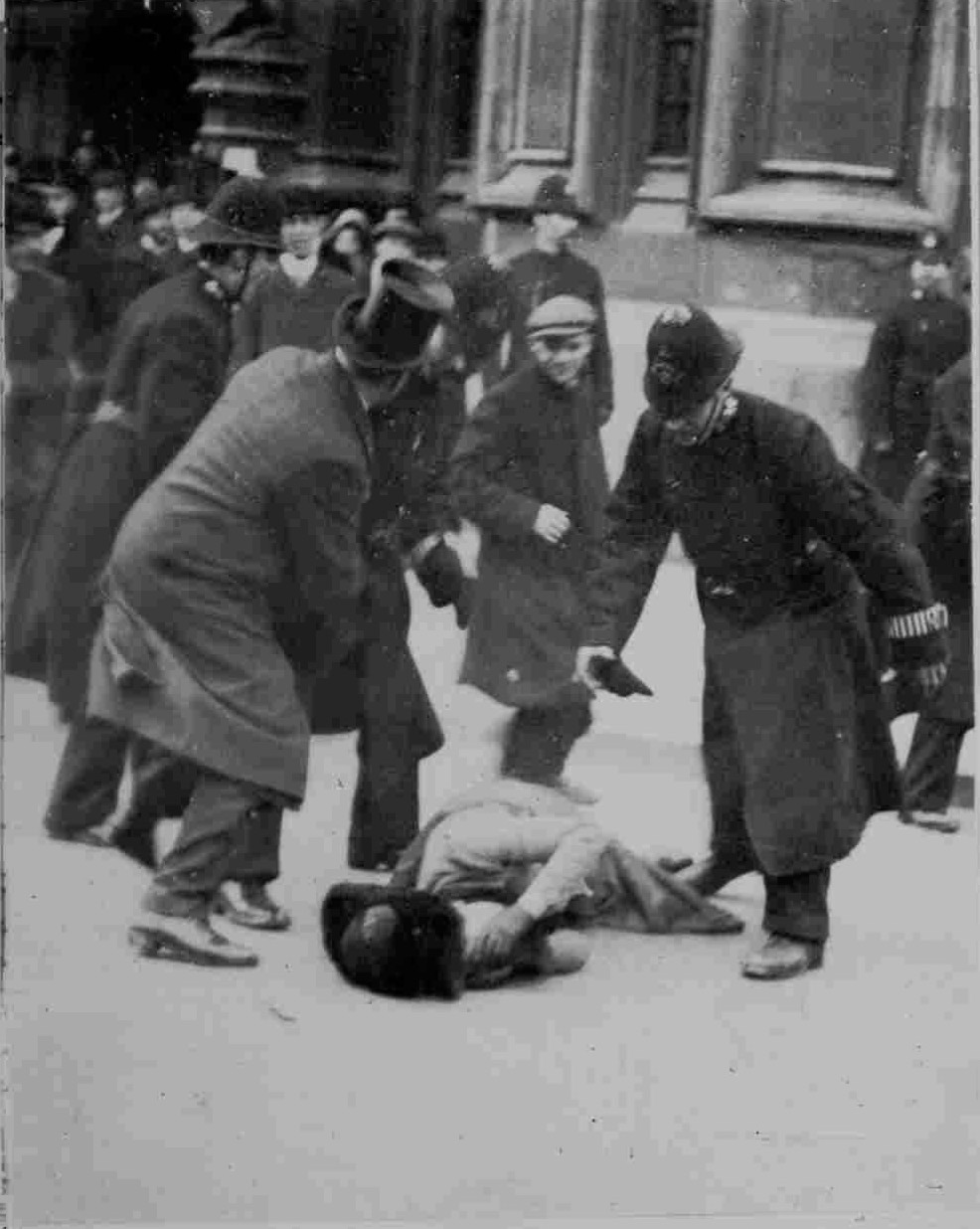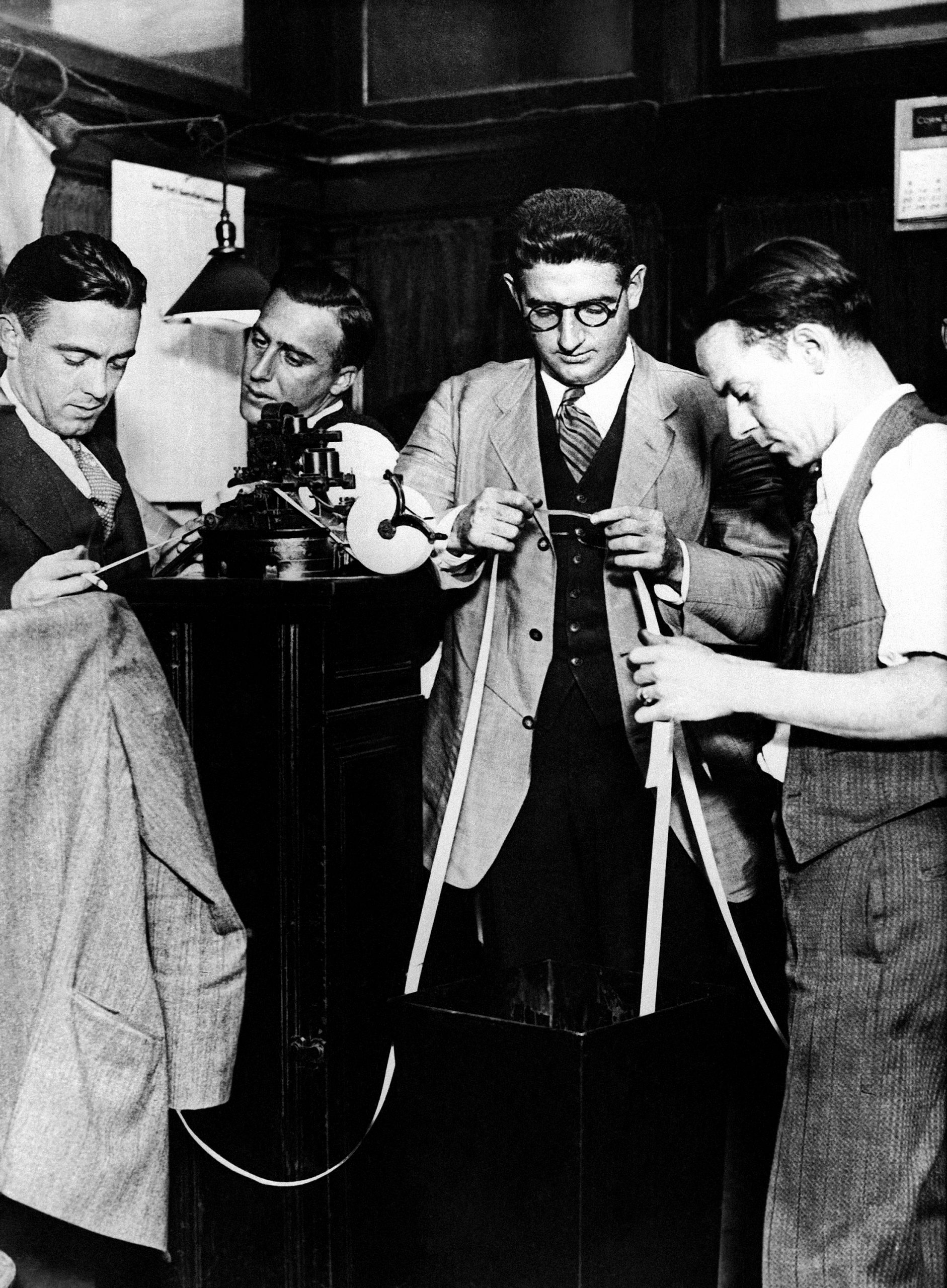Black Friday. The day each year when we haul ourselves out of bed in the middle of the night and freeze while waiting for stores to open so we can stampede inside with the fervor of the Oklahoma Land Rush and snatch up unbelievable deals on everything under the sun.
Calling this annual spending spree Black Friday is relatively new. Retailers had used the phrase for decades to describe the day they began turning a profit for the year. The rest of us simply called it The Day After Thanksgiving.
But advertisers hated that clunky phrase when promoting Day After Thanksgiving sales. The shorter and simpler “Black Friday” crept into our vocabulary and eventually claimed the title.
History is littered with significant events also called Black Friday. And they had nothing to do with shopping. Here are three of the biggest.

Black Friday 1869. Business partners Jay Gould and James Fisk had a devilish idea. Almost every week that year, President Ulysses S. Grant’s administration sold gold bullion to pay down the national debt and boost the economy. Gould and Fisk devised a scheme. They bribed Grant’s brother-in-law to help them gain insider information to corner the gold market.
They began on Friday, Sept. 1, by buying $1.5 million in gold. For every dollar the price of gold rose, Gould and Fisk made the equivalent of $265,000 today. They kept hoarding the precious metal all month, driving its price higher and higher. Grant belatedly realized what they were up to. On Sept. 24, he ordered the sale of $4 million in gold and another $4 million in bonds. Gold plummeted.
The result: Gould and Fisk’s scheme fell apart. Fortunes were lost. The economy was plunged into a crisis that caused financial hardship for millions of Americans. Grant’s presidency suffered a loss in credibility from which it never fully recovered. And the press dubbed the debacle Black Friday.

Black Friday 1910. Some 300 Suffragettes marched on Britain’s House of Commons in London. They were angry because a bill to give women the right to vote was stalled in legislative limbo. So on Friday, Nov. 18, 1910, they took to the streets demanding action.
As they neared Parliament, they encountered brutal resistance from dozens of male police officers. The men pushed, kicked, and shoved the women — and worse. Several were sexually assaulted.
The ghastly behavior horrified Fleet Street newspapers. It also caused headaches for Winston Churchill who, as home secretary at the time, was responsible for maintaining law and order.
Britain’s women eventually won the right to vote in 1918, spurred in part by memories of what had happened on Black Friday 1910.
Black Friday 1929. Perhaps the most famous of all Black Fridays. The Roaring Twenties was a time of easy money and easy morals. The country partied to jazz music while drinking bootleg booze.
The exuberance was most irrational on Wall Street, which had never experienced such a spectacular boom. Stocks kept going higher and higher, making many investors rich while tempting millions of everyday Americans into buying shares. Good times, it seemed, were here to stay.

A serious warning sign came on Sept. 20, 1929, when the London Stock Exchange collapsed. That rattled American investors, but only briefly.
However, nervous fears were unleashed. Skeptics had said for months that stocks were overvalued. What if they were right?
A gradual selloff started in mid-October. Then, on Oct. 24, the market lost 11 percent of its value at the opening bell. There was a rally the next day. Everyone from Wall Street to Main Street anxiously held their breath to see what would happen next.
It didn’t take long.
The selloff resumed the following Monday. It got worse on Tuesday. Then the bottom fell completely out on Friday, the 29th. Some $14 billion (or more than $200 billion in today’s dollars) disappeared that single day. The volume was so heavy, stock tickers didn’t stop running until nearly 8 p.m. For nearly 40 years, it held the record for the most stocks traded on one day.
The Great Depression, America’s longest and most painful economic crisis, was underway. And it started on Black Friday 1929.
Getting up early and fighting huge crowds to save a few bucks on Christmas gifts makes Black Friday 2018 pale by comparison.
J. Mark Powell (@JMarkPowell) is a contributor to the Washington Examiner’s Beltway Confidential blog. He is a former broadcast journalist and government communicator. His weekly offbeat look at our forgotten past, “Holy Cow! History,” can be read at jmarkpowell.com.

